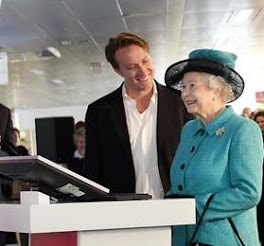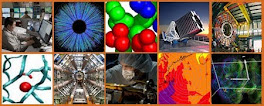July 13, 2014 at 3:49 pmThe current blog topic put the spotlight on blood stains being out of stereoregister with body image. Today I discovered a place where ‘body’ image, in the widest sense of the term, is out of register with its own image, with implications for imaging mechanism. Where you might ask?
Clue: it’s the chin/neck region, produced by a re-routing of linen to follow facial contours as it was forced onto the underside of the chin before impacting on the neck and later the chest. It put surrounding image (hint hint) out of stereoregister. In short – no tenting of linen from chin to chest, as per Vignon diagram, but close conformity (under applied pressure) with body contours.
And here's the inevitable response.
July 13, 2014 at 5:03 pm
I am wondering if you can show with some imaging technique. I’m sure it would help to get a clearer picture..
OK, let's assemble this posting in small instalments (my preferred MO as it happens).
Look at this image closely in the chin/neck region (Durante 2002 from Shroud Scope with some added contrast):
Look carefully at the left hand side immediately under the 'baked-in' twin-track crease under the chin (the subject of a number of previous postings on this site). Then look what's immediately above it, separated by a gap.
Now look at this labelled version (yellow marker).
Do you see what I see?
Methinks the hair extends BELOW that chin crease, but is slightly out of stereoregister. Why?
Answer: because the chin crease marks where the linen was forced to make a right-angle turn under the chin, following the underside (scarcely imaged due to light force of contact only) then makin a second right angle turn on meeting the neck, giving rise to the darker band as it impacted the neck 'square-on'.
In other words, the deformation of the linen caused a break-up in the surrounding image. The hair on the left (your left) did not end at chin level. It extended lower, shown by the solid yellow line, but was shifted to the right, due to the re-routing and distortion of the cloth.
There may or may not be a similar effect on the opposite side.It's hard to be certain, due to the hair being less well imaged on that side. There's maybe a hint of longer hair that side, shown by my (faint) dashed yellow line.
Late edit: have just spotted that low-hanging bloodstain on the hair, right side as viewed, corresponding to the cut-off region on the left. It supports the notion that the hair on BOTH sides was longer than might seem to be the case at first sight, extending well BELOW that chin-crease.
Implications? Profound, actually, for the mechanism of imaging (radiation, with air gaps allowed versus contact /conduction, no permitted air gap).
See my earlier post on the routing of linen along the underside of the chin, as distinct from 'tenting' as per the Vignon radiation model.
(late edit: am I misinterpreting what Bernard Power says re the diagram below? Is it HIS diagram, not Vignon's? Irrespective, it's a valuable one since it shows the paucity of sites at which there would be sizeable air gaps: one can usefully focus on the neck/chin, the groin and the feet - not forgetting to address the top-of-head anomaly).
More tomorrow.
Monday July 14. Tomorrow has arrived. In fact most of what I need to say re that crucial diagram above has already been said, here on this site. The imaging of feet (partial at best) was the subject of a recent posting, which took the model you see above as its starting point. "Where are the tips of the toes?" was the question asked and after a diligent search, some tell tale evidence, maybe not 100% convincing, was found. If the tips are/were there, then why not the rest of that particular foot, the one that is generally assumed to be missing through being crossed over onto the other? Answer: it's missing because imprinting requires actual physical contact in a conduction-scorch model. The slightest air gap as in the diagram above does not permit imprinting, unlike the attenuated-radiation model that permits air gaps 3 to 4cm wide.
In other words, the finding of imprinted tips of toes with scarcely any evidence if any of the accompanying foot is prima facie evidence for scorching, aka thermal imprinting, by contact conduction, NOT any kind of radiation.
Similarly, the 'folded hands over groin region' was also addressed recently (see July 3 addendum at halfway point) , pointing out the failure to see imprinting exactly where one woulod expect due to tenting of linen. No, we are not talking about partial or token imaging across air gaps, as allowed in radiation models. We are talking about NO discernible imaging, except maybe with the eye of faith.
Whenever I look at a graphic, I try to imagine myself in the position of someone claiming to see things I don't, and having to defend that position against myself and other sceptics. I would not envy anyone who had the task of saying there WAS imaging, albeit weak, across the small air gaps that exist in that diagram above in the hand.groin location.
Top of head 'anomaly'?
Yes, there's an anomaly there, whether one subscribes to a radiation or contact/conduction model. In both instances one would expect it to be imaged, due to zero-distance separation between cloth and body.
It was the topic of discussion on shroudstory.com back in January, and a couple of occasions since.
The radiation model says the reasons for the top of head not being imaged are the same as the reasons why the sides of the body are not either, namely that the (miraculous) source of radiation also had miraculous properties, namely of being emitted orthogonally from the subject parallel to the Earth's
How is it explained in the contact/conduction model? Well, let's be candid, and admit that the latter is generally seen as a "forgery scenario", and if the aim is to create a look-alike body shroud that had enveloped both sides of corpse, then one would not want the two sides joined at the head, as would be the case if the top of head had been imaged. At the same time, one wants the two images, frontal and dorsal, separated according to a Goldilock's principle - not too little, not too much, so as make it seem that an up-and-over shroud had been used. All that's needed to achieve the optimum-sized gap (optimum that is for artistic purposes) is either to imprint frontal and dorsal sides separately, being careful to get the gap right, OR to imprint in one operation, say frontal side down, bringing the linen around a PROTECTED top of head so as to ensure no imprinting of those crucial few centimetres.
Caveat: unless or until Heller and Adler's 'blood before image' dogma is independently confirmed, preferably by recordable physical, non-destructive techniques, then there is still (at least in this observer's mind) a question of doubt as to whether the Man on the TS is actually Jesus, or meant to have been in a "forgery" scenario. Without the bloodstains, the image is simply that of a naked man with no obvious signs of trauma or other lesions. It is not impossible that the base image was intended originally to represent someone else (a Knight Templar? Jacques de Molay? Geoffroi de Charney?) and that it was subsequently morphed by deft application of blood (or blood substitute) in all biblically-correct places. Thus my aversion to incorporating "forgery" as a tag at the end of postings, albeit at the risk of getting fewer visitors via search engines. I need a term other than "forgery". But what? False flag operation?
Instant experiment
Update: had to extricate myself earlier in the day from a hostile commentator with a bee in his/her bonnet about the imaging of hands on the TS. It was difficult to make out precisely what point was being made and I shan't even try to guess at what point was being made,
All I could say was that one could hold one's hand up to the light and see scarcely any air gaps if one kept fingers together. While TS image does show separate fingers, i.e. with apparent spaces aka air gaps, that was not inconsistent with pressure imprinting, given that fingers are rounded and have a central bone.
The fastest way to make that point was to model thermal imprinting, but using an applied "paint" for imprinting.
 |
| Imprint of back of hand with fingers held together, with coated hand being pressed DOWN into the cotton sheet. |
 |
| Reversed geometry: the cotton sheet was placed ON TOP of the hand, then pressed firmly all over. |
 |
| Comparison of the two methods |
Results: coating one's hand with the chocolate nut spread, then pressing down in cotton, keeping fingers together, produced a result rather similar to the TS image. There were apparent gaps between the fingers, but they were an artefact of imprinting: the full width of each finger is not imprinted, thus making the fingers look 'bonier; than they really are (ring any bells?).
Reversing the geometry produced an image with unsightly lateral distortion, quite unlike the TS image, with smaller gaps between the fingers.
Tentative conclusion: if as I suspect the TS image is a thermal impactograph, then it's likely that the frontal side at least was imprinted by pressing DOWN into linen, with some kind of soft underlay.
No, I haven't missed a very important observation - my thumb was not imaged in the first method! Why not? What's the relevance to the TS. More on that soon.
Update Tuesday July 15th
Have just placed this comment on shroudstory.com in reply to New Zealander daveb:
July 15, 2014 at 1:36 am
One of the most obvious details of the TS image is its
incompleteness. Not only is there no imaging of the sides of the body,
but there is no imaging of the top of the head, nor the sides of the
face.
That’s not all. When scientists in the past have modelled the effect of placing a shroud over a corpse (see this simple sketch diagram in the Power paper) they reveal a fairly limited number of places where one expects an appreciable air gap between cloth and body:
(a) under the chin, assuming correctly (or otherwise) that the cloth tents between chin and chest
(b) the area around the crossed hands
(c) the frontal feet, assuming tenting at the tips of the toes.
I have examined each of those three crucial points in my current posting, and in each instance find the facts fit the model albeit with some minor qualifying assumptions, supportive of a contact model, fitting with everyday experience, and obviating the need for mysterious radiation that can image across air gaps.
It’s proposed that the linen followed the contours of the chin, underside of chin, neck, chest to produce the peculiar alternation of light and dark we see in the neck region of the TS, where light and dark is not due to size of air gap, but to applied pressure (or directional vector thereof) between cloth and subject’s contours.
Yes, In the region of the crossed hands, we do see the effect of air gaps between hands and abdomen, producing an either/or imprinting. Put another way there is scarcely if any imaging of those areas of the abdomen that abut on those raised hands, due to a tenting effect.
The hands and fingers themselves are interesting, and despite yesterday’s sniping, I have anoxie to thank for prompting my quick experiment with the Nutella that explains why the TS man’s fingers look so bony. I regard those results as a major step forward in my own understanding of those peculiar fingers, though I can’t speak for anyone else here.
Reminder: no matter how close together one’s fingers are when contact-imprinted, they will look skinny and separated on the imprint, at least when pushed DOWN into fabric.
As for the feet, I believe I also scored a first in showing that the “missing foot” (missing we were told because it is crosses over becoming superimposed onto the other) is in fact not entirely missing, that the tips of the toes were (if one looks closely) imaged exactly as one expects from tenting in the body-cloth profile referred to earlier. It’s that tenting effect, not overlap, that explains why it’s only the tips that are imaged, the sizeable air gap explaining the absence of the rest of the “missing “ foot.
Talk about spheres etc in the context of the TS is somewhat of a needless distraction methinks (I speak as an experimentalist, not a mathematician).. In modelling studies the human form could be said to behave more like a bas relief in the impaction model, albeit with those crucial “awkward bits” listed. But it’s the focus on those very same awkward bits that allows one to test model against reality, and though I say it myself I consider the model emerges with added credibility and dare I say scientific respectability (Thibault Heimburger and other anti-scorch evangelists please note),
Meanwhile the radiation model looks increasingly improbable, lacking not just theoretical rigour but a complete absence of experimental confirmation.
That’s not all. When scientists in the past have modelled the effect of placing a shroud over a corpse (see this simple sketch diagram in the Power paper) they reveal a fairly limited number of places where one expects an appreciable air gap between cloth and body:
(a) under the chin, assuming correctly (or otherwise) that the cloth tents between chin and chest
(b) the area around the crossed hands
(c) the frontal feet, assuming tenting at the tips of the toes.
I have examined each of those three crucial points in my current posting, and in each instance find the facts fit the model albeit with some minor qualifying assumptions, supportive of a contact model, fitting with everyday experience, and obviating the need for mysterious radiation that can image across air gaps.
It’s proposed that the linen followed the contours of the chin, underside of chin, neck, chest to produce the peculiar alternation of light and dark we see in the neck region of the TS, where light and dark is not due to size of air gap, but to applied pressure (or directional vector thereof) between cloth and subject’s contours.
Yes, In the region of the crossed hands, we do see the effect of air gaps between hands and abdomen, producing an either/or imprinting. Put another way there is scarcely if any imaging of those areas of the abdomen that abut on those raised hands, due to a tenting effect.
The hands and fingers themselves are interesting, and despite yesterday’s sniping, I have anoxie to thank for prompting my quick experiment with the Nutella that explains why the TS man’s fingers look so bony. I regard those results as a major step forward in my own understanding of those peculiar fingers, though I can’t speak for anyone else here.
Reminder: no matter how close together one’s fingers are when contact-imprinted, they will look skinny and separated on the imprint, at least when pushed DOWN into fabric.
As for the feet, I believe I also scored a first in showing that the “missing foot” (missing we were told because it is crosses over becoming superimposed onto the other) is in fact not entirely missing, that the tips of the toes were (if one looks closely) imaged exactly as one expects from tenting in the body-cloth profile referred to earlier. It’s that tenting effect, not overlap, that explains why it’s only the tips that are imaged, the sizeable air gap explaining the absence of the rest of the “missing “ foot.
Talk about spheres etc in the context of the TS is somewhat of a needless distraction methinks (I speak as an experimentalist, not a mathematician).. In modelling studies the human form could be said to behave more like a bas relief in the impaction model, albeit with those crucial “awkward bits” listed. But it’s the focus on those very same awkward bits that allows one to test model against reality, and though I say it myself I consider the model emerges with added credibility and dare I say scientific respectability (Thibault Heimburger and other anti-scorch evangelists please note),
Meanwhile the radiation model looks increasingly improbable, lacking not just theoretical rigour but a complete absence of experimental confirmation.






















No comments:
Post a Comment